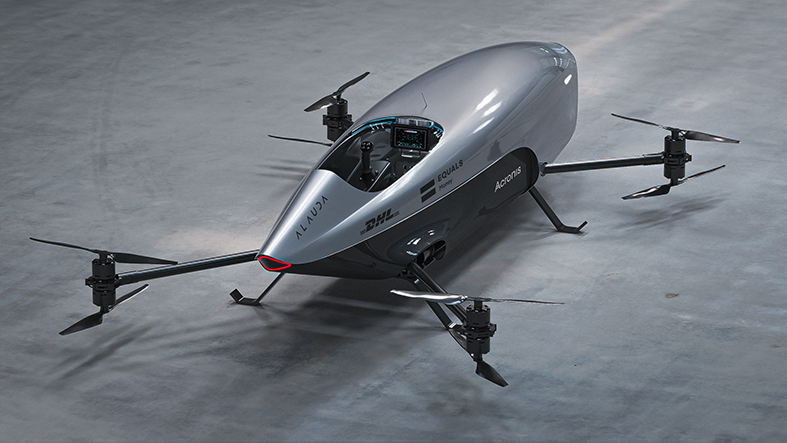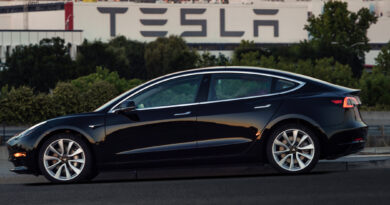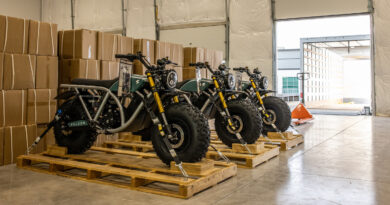Airspeeder: electric flying racing cars are “ready to race”
Australian aeronautics company Alauda has unveiled what it says is the world’s first flying electric racing car – the Airspeeder Mk3 – ready for remotely piloted race competitions this year.
More excitingly, these remote control races will serve as a “technical test-bed and feeder series to a manned racing series in 2022.”
But is this airborne racer a car? The Oxford English Dictionary defines a car as “a road vehicle powered by a motor, designed to carry a driver and a small number of passengers”, but let’s gloss over that and remember….flying racing cars!
Well, sexy looking giant drones, judging by the pictures.
Octocopter formation
They’re laid out in a (Bond villain voice if you could) ‘octocopter X formation’ for manoeuvrability and stability, meaning we’re promised sharp hairpin style turns similar to Formula One cars. The Airspeeders trump Lewis Hamilton’s restricted F1 racer though as his can’t, of course, move vertically.
There’s more. Who said Australia had no car manufacturing industry? These Airspeeder Mk3 flyers are “currently being manufactured at Airspeeder and Alauda Aeronautics’ technical HQ in Adelaide, South Australia.” Airspeeder says “more than 10” identical racing vehicles will be produced and supplied to teams in 2021. No word on who or where these teams are, however.
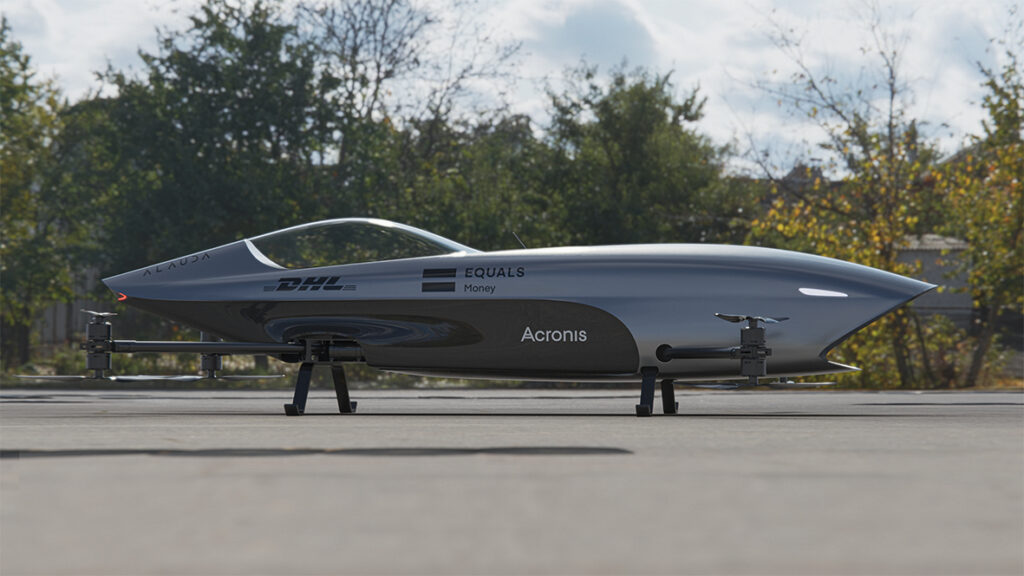
The flying racers will be controlled by “expert remote operators from the ground” with innovations including LiDAR and Radar collision avoidance systems creating a ‘virtual forcefield’ around the craft for safe racing.
The Airspeeder Grands Prix can include rapid pit stops too, with Alauda’s engineers developing a ‘slide and lock’ system for rapid removal and replacement of batteries when on the ground. Tyre strategy? That’s so 20th Century. Here, you have battery strategy.
International calendar
We’re promised the racing series details will be announced in coming months, with the remotely-piloted races presenting “close-quarter flying circuit racing at speeds of more than 120km/h.”
We’re also promised an international calendar of races with behind-closed-doors pre-season tests happening in Australia before the calendar kicks off.
Airspeed says the racers are defined as electrical vertical take-off and landing vehicles (eVTOL), are the result of more than three years development work, and the sport will “accelerate a new clean-air aerial mobility revolution.”
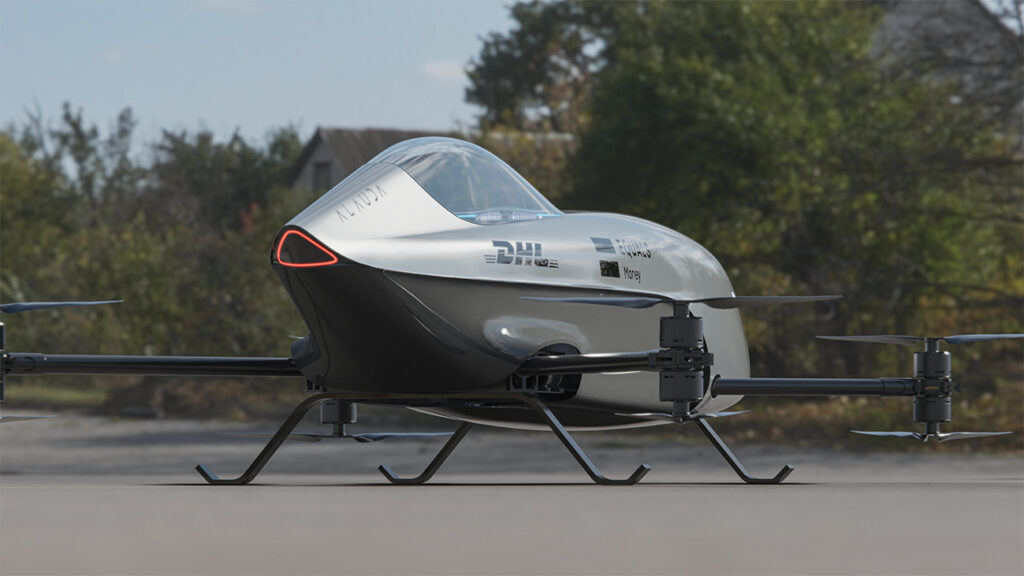
Construction is a carbon fibre frame and fuselage for strength, stiffness and light weight. The craft are being developed, we’re told, by a team drawn from leading names in aerospace, automotive and motorsport technology, including McLaren, Boeing, Jaguar Land Rover, Rolls-Royce and Brabham.
120km/h speeds
So, what’ll she do? These Airspeed Mk3s feature a 96kW electric powertrain with a thrust-to-weight ratio above two, on a craft weighing 100kg unmanned. This apparently allows the speeders to fly at speeds in excess of 120km/h.
These Mk3s will provide “vital information on vehicle dynamics, performance, safety and powertrain technology that will inform the final development of the manned Mk4 Airspeeder vehicle.”
A Mk4 version with pilot in the cockpit would make for far more intriguing racing than watching Mk3s being controlled by land-based remote steerers – very cool though that is.
But adding the weight of a human to one of these – even if they’re a 50kg lightweight – must present significant challenges. The manned Mk4 version will seemingly introduce a full carbon fibre monocoque body as one way to help.
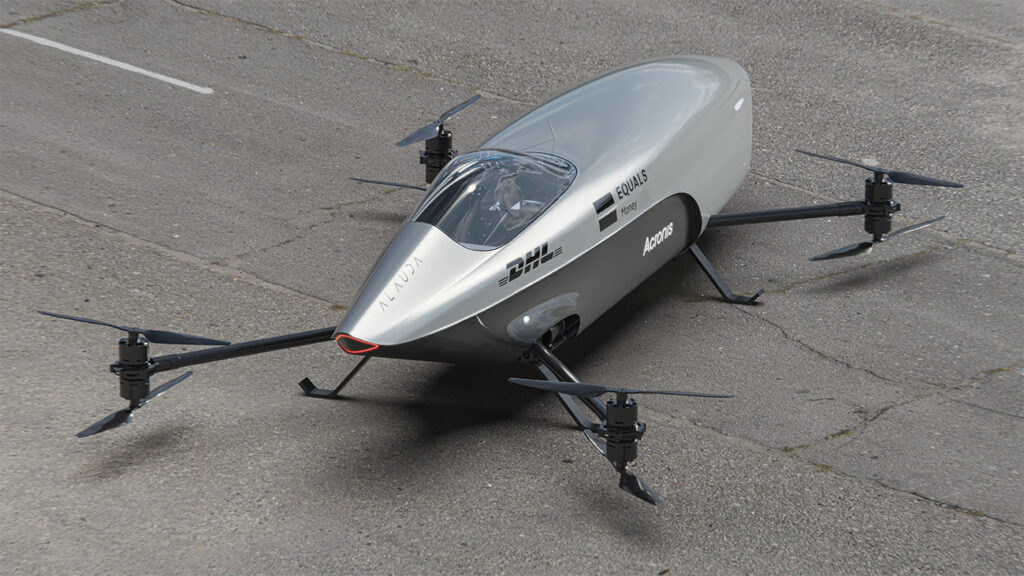
Landmark moment
Matthew Pearson, founder of Airspeeder and Alauda Aeronautics, has said suitably rousing things at the Mk3’s reveal. “The unveiling of the world’s first full-sized electric flying racing car is a landmark moment in the dawn of a new mobility revolution.
“It is competition that drives progress and our racing series is hastening the arrival of technology that will transform clean-air passenger transport, logistics and even advanced air mobility for medical applications.”
It all sounds rather wonderful, but is certainly a case of we’ll believe it when we see it. We’ll leave the last confident words to Mr Pearson.
“The world’s first electric flying car races will take place this year and will be the most exciting and progressive motorsport on the planet.”
Popcorn’s ready, we wish you well.

